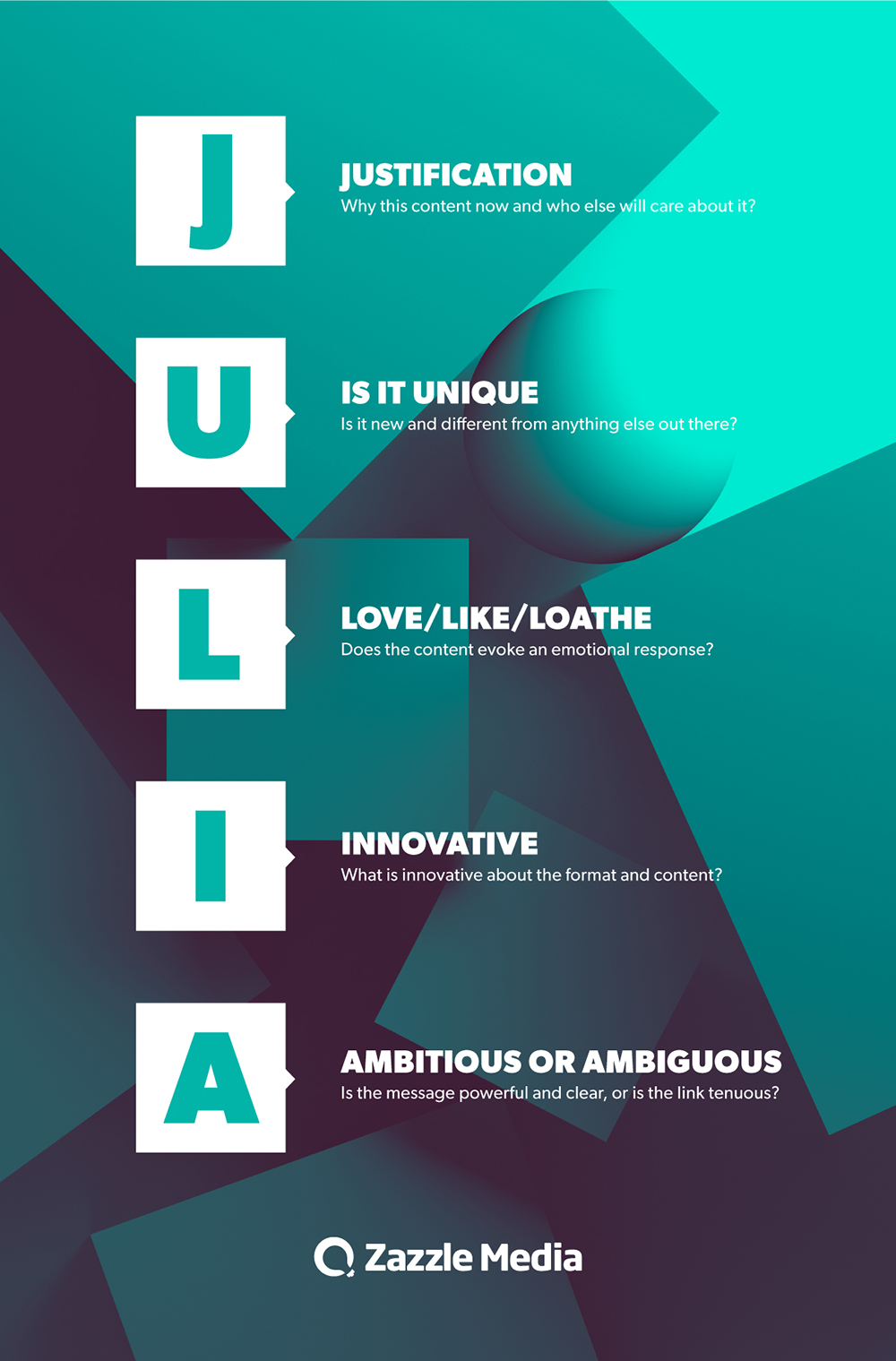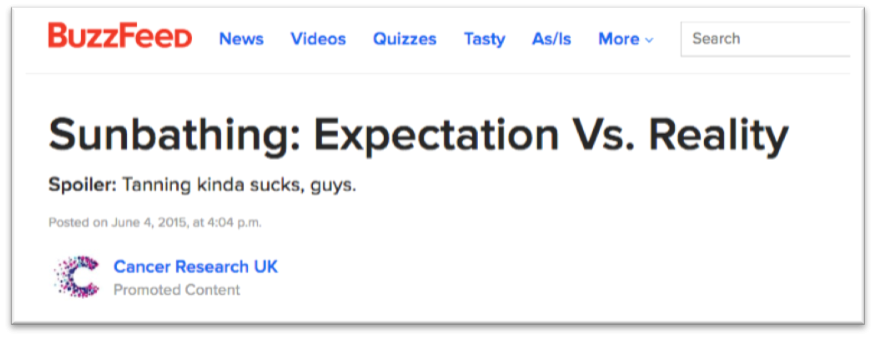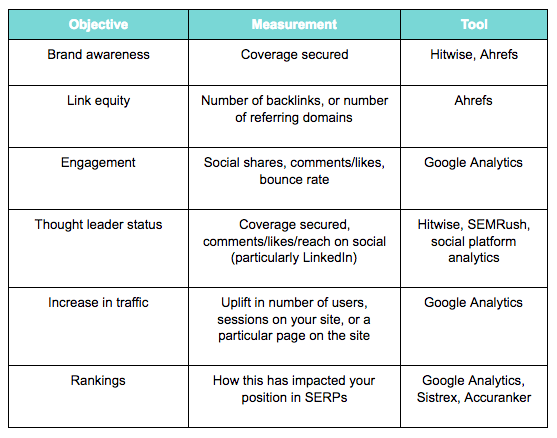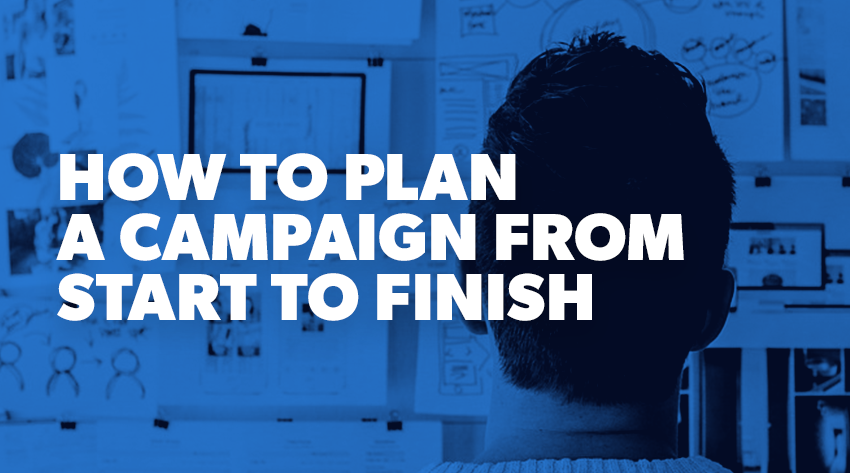A content marketing campaign is an effective way to build a brand’s online presence, engage with your audience and find new customers. But it can be a time-consuming and complicated process to come up with a campaign idea you are confident will work. It involves many different skills to bring a campaign to life and deliver results. Keeping on top of all the tasks and the teams that are responsible for them can be a challenge, which is why a properly executed campaign plan is imperative.
In this blog post, we will talk you through our processes on how to come up with award-winning campaigns - from the data that supports the idea, the most effective ways to brainstorm and what you need to consider to validate it.
We will also share our insights on how to plan out every task involved in the creation and execution of the final idea to ensure everyone knows what they need to do and most importantly by when. As well as covering every distribution tactic and how to measure the success.
So, where do we start?
Stage 1
What do you want a campaign to achieve?
First things first - before you carry out any research or start thinking of a campaign idea, you need to know what you want it to achieve.
Are you looking to rank for more keywords/long tail search terms, build your site’s authority through links, or increase your brand awareness?
Whatever the objective, make sure you know what success looks like before you begin and carefully track and measure every element of the campaign, so you can prove its ROI. We have a condensed list of potential KPIs you could look at.
Who are you targeting?
The next question to consider is who do you want to engage with the campaign? It’s important you create content that your current audience will enjoy, as well as content to attract new customers. You need to know where these people hang out online, what sort of content they interact with, how they discover new brands, what they expect from them and other interests you could potentially tap into (this can be incredibly useful for finding interesting angles to use for accompanying content).
Having insight into where your audience discovers new brands is particularly valuable when it comes to identifying the right platforms to use to promote content, as well as the type of content you should be creating.
Knowing how much time is spent online by your audience online each day indicates how likely it is that they will engage with longer forms of content and therefore whether (or not) these should be included in your content strategy.
As well as using your own data, there are also a wide variety of tools out there - here are a select few tools which can help you identify your audience:
- ComScore enables you to access live demographic data of websites via cookies. It can look at your site to pinpoint who your current audience is, as well as competitor sites that you can benchmark against.
- Global Web Index (GWI) builds an audience within it to query/scrutinise the data. This ranges from marketing touch points such as how people discover brands online, how they research products online, what users want from a brand, as well as identifying what social media platforms they use, and their general online activities including time spent online across platforms. This enables us to look at more generic behaviours of the audience such as general interests, their professional life, home life etc. You can create segments of the audience which you can compare against each other and the UK average to differentiate how to target each segment.
- YouGov is similar to GWI but uses data collated from ’opted-in’ participants who fill out surveys. This platform, on its free specification, covers basic information on demographic and entertainment preferences.
- Statista gives stats on more than 80,000 topics from around 20,000 sources so it allows you to get a very good picture of the market you're working in quickly. It also gives data on attitudes to certain things, so you can create content around what is important to your target audience and disregard what is not.
What are your competitors doing?
Few ideas are truly unique. Sometimes it can be helpful to take a look at your competitors’ content marketing efforts to see what has worked well for them, and if there is a way you can replicate it and, more importantly, make it even better.
So, if they have done an on-page guide which has picked up organic links, you need to create something similar but even more in-depth, perhaps including video assets, graphs and interactive images to bring it to life.
If links are your primary objective, sites such as Ahrefs and Majestic allow you to identify the sites your competitors have got links on and with what sort of content. So, again you have an immediate list of sites you can approach and with the sort of content you know they will accept.
What keywords do you want to target?
Some of the best ideas also have a basis in search. It’s useful to do some keyword research in advance of a brainstorm and there are many tools available to help you. We've covered this extensively on our site and you can find our guide here.
Ahrefs new ‘questions’ section and Answerthepublic.com can also help you identify long tail search terms, you may wish to target to answer people’s specific questions - micro moments/pain points. Around 70% of all searches are now done using long tail keywords and the average conversion rate is two and a half times higher, so adding these into your content campaigns should aid conversion.
You can look at the keywords with the highest search volumes but align with keyword difficulty and links required to ensure your campaign has the potential to capture traffic/rank on page 1/build the right amount of authority into your site.
Bringing all of the above together when you are coming up with a campaign will help your content to rank better and ensure you have considered SEO and CRO to provide real value to your audience.
Stage 2
Now it’s time to brainstorm
Although no one can give a 100% guarantee that a content marketing campaign will work, all the above can at least show you have tried to back up the ideas with data.
So share this section with the creative team and get ready for the fun bit...
There are many different techniques to come up with content marketing campaigns, here are the top methods:
- Brainwriting – where each person involved is given a piece of paper, they write down as many ideas as they can, then pass the sheet to the person next to them, who looks at what is written to see if it sparks another idea which they then write down. You keep passing the paper around the room until the original piece of paper comes back to the person it started with. The group then discuss the ideas they think are the best.
- Brainstorming – this method is much more targeted and sees the room come up with ideas that hit specific content types, including:
-
- News/seasonal events
- Unique data
- Freedom of information topics
- Human interest angles
- Ideas to support the wider marketing plan
- Off the wall, crazy, innovative ideas you just believe in
-
Different content types for different aims
So generally, what types of content can help you achieve your objective?
- Interactive content has the best chance to go viral and build brand awareness and links
- Infographics, data cards and in depth features help bring content ideas to life and build links
- Surveys/studies, unique stats and facts give you great content for PR activity, for brand awareness
- eBooks, behind a pay wall or data gate, will get your email sign ups and attract new audiences
- Short videos work best on social for engagement and shares
- Thought leaderships articles work best on LinkedIn and on trade/industry media sites
Don’t forget to sense-check
All too often, you can be so pleased you have come up with an idea everyone in the room likes, you can forget that it isn’t really them you’re trying to please – it's for your audience/potential customers and the sites you want to host/promote it.
So, it’s imperative you meet again at a later date to review/validate the ideas, asking:
- What’s the hook?
- Do we have unique data?
- Is the idea open to ambiguity?
- Is it credible?
- Does it provoke an emotional response?
- Does it tell a story?
- Why this idea right now?
We have condensed this into what we call the JULIA approach:

If you have strong relationships with site owners you wish to secure coverage for the campaign on, or links into it, it is often beneficial to pitch the idea to these third parties before you go to the next stage.
Getting their advice can be invaluable as they can give a steer on what they would like to see in order to promote it; and it can reassure others (your client or boss) that the idea is a good one and will appeal to others.
What does the content look like?
Once you have validated the idea, you then need to consider what form it will take and what supporting assets you need to create to aid your distribution efforts – will it be interactive, a visual or written piece of content, or even a video? Think about your aims and audience here, and what they will engage with best, to help you achieve your goals.
If possible, get mock-ups designed to help bring the campaign to life as this will help you get buy-in more quickly.
Once you have pitched the campaign to your boss or client and they have signed it off, the next phase is the creation aspect. You'll need to brief the content writer/team with a scoping document, detailing what the campaign is about, what content needs to be included, along with any examples of any similar ideas or sources they can use to aid them. Depending on the format of the campaign content, you'll need to think about what text and images will be needed. This is why a timeline is key.
Set a timeline
From this point, building out a Gantt chart listing all the tasks and setting clear deadlines is imperative. This helps everyone involved in the creation phase keep on top of the work and see the impact any delays will have. You can share this with your client or other internal teams who need to sign off elements of the campaign. So, again, they can see what they need to do by when, ensuring there are no surprises. Your Gantt chart should cover not only the creation stage, but the distribution and measurement stages of the campaign too, so that your tasks are plotted from the start to the end of the campaign efforts.
Stage 3
Now it’s time to distribute
So, you’ve created a content marketing campaign backed up with data to hopefully increase its chances of success; now all you need to do is let other people know it exists.
There are three avenues you need to explore to distribute a campaign – owned (utilising your own channels – website, blog, social channels, customer database), earned (using third parties – including journalists, influencers and site owners) and paid (PPC, social amplification, native advertising.)
Owned channels
Owned refers to your website, blog and social channels but you could also utilise email marketing – users have signed up to get information from you, so don’t forget to target them with your content marketing efforts too.
You don’t want to bombard people however, so marketing automation tools/software such as Hubspot, Marketo, Salesforce Pardot, Microsoft Dynamics can help you create more personalised emails to your existing database. These services will also help spread sends so that your audience doesn’t get fatigued with your communications.
Marketing Automation is a form of customer relationship management (CRM) that focuses on the definition, segmentation, scheduling and tracking of marketing campaigns. The use of marketing automation makes processes that would otherwise have been performed manually much more efficient and makes new processes possible.
Automation platforms allow marketers to automate and simplify client communication by managing complex marketing strategies from a single tool. It can assist greatly in areas such as:
- Lead Generation
- Segmentation
- Lead nurturing and lead scoring
- Relationship marketing
- Cross-sell and upsell
- Retention
- Marketing ROI measurement
So when considering your Owned approach, you'll want to plot out the content's positioning on your own website, your social posting schedule and sharing plan, and your email approach. Check out our Account Based Marketing principles to make the most from your email channels if this is an area you are less sure about.
Earned
Earned content is highly credible as it comes from external sources; however, it is the hardest to get.
Before you start to go down this route, it’s important to identify the sites/influencers/journalists you think might be interested in your campaign. There are many tools/resources available to do this, but a few of the best are:
- #journorequest – a Twitter hashtag journalists use when they need information/a quote quickly.
- Pitchbox – a simple, easy to use outreach platform. It puts you in front of the bloggers, publishers and influencers that you need, as well as allowing you to personalise and customise your approach. It is also heavily data driven, meaning you can see what works, and what doesn't. Covering almost every international location, it allows you to reach out into places you would traditionally miss, as well as grouping your whole teams outreach efforts into one handy place.
- Vocus/Cision/Gorkhana – a database of journalists and influencers, which they can also use to make requests for stories.
- LinkedIn – use LinkedIn to find and contact journalists and relevant webmasters in target industries.
- Ahrefs – an SEO software suite that contains tools for link building, keyword research, competitor analysis and rank tracking.
- Response Source – a journalist enquiry service that sends journalist requests directly to your inbox. Enquires come from national, regional, consumer and trade publications across a variety of niches - those of which you can tailor to meet yours needs, to ensure you only receive relevant enquiries.
Journalists working for media titles are incredibly stretched and do not have time to meet with PRs as often as they once did. They also get inundated with hundreds of emailed press releases a day, so write a unique article or press release for each publication you’re targeting, tailoring it to their audience and promoting your campaign.
If you do it right, some sites will ‘cut and paste’ what you have provided and upload it straight onto their website with minimal changes and for free.
Paid
Paid distribution is perhaps the most straightforward to define, it’s basically where you pay for your content to reach more people.
According to iab.com, social media advertising commanded $22.2billion last year in the UK, rising 36% over $16.3 billion in 2016. The reason? You can be really targeted, making sure your content is in front of really relevant people.
It’s important with this distribution that from the off you know your audience, which platform you’re going to use, the best type of content and the purpose (is it for engagement or reach?).
Native advertising is what we used to call in print media ‘advertising features,’ where you pay for a site to host your content - it looks very much like a standard article but it sits under a heading of ‘Promoted Content’ or ‘Sponsored’ and has therefore been paid for.
A great example can be seen below. Cancer Research UK paid for an article to appear on Buzzfeed. It looked very much like a standard article but it was paid for – you can see beside their logo is the heading ‘Promoted Content’.

Native advertising will secure the eyeballs on these big sites, but ensure you have good tracking set up to understand the conversions and then ROI from this paid tactic.
Stage 4
Measuring campaign success
Depending on the objective, there are a variety of tools available to help you measure the success of your content marketing efforts.

Make sure you regularly monitor, as organic pick-up can continue three, six, nine, 12 months – and beyond – after your distribution efforts have come to an end.
And finally...
There are no guarantees that a campaign will 100% deliver its objectives, but by following this process and using data to back up any ideas, you can at least show you have tried to cover every eventuality to ensure success!
Sign up for our monthly newsletter and follow us on social media for the latest news.





 Proudly part of IPG Mediabrands
Proudly part of IPG Mediabrands